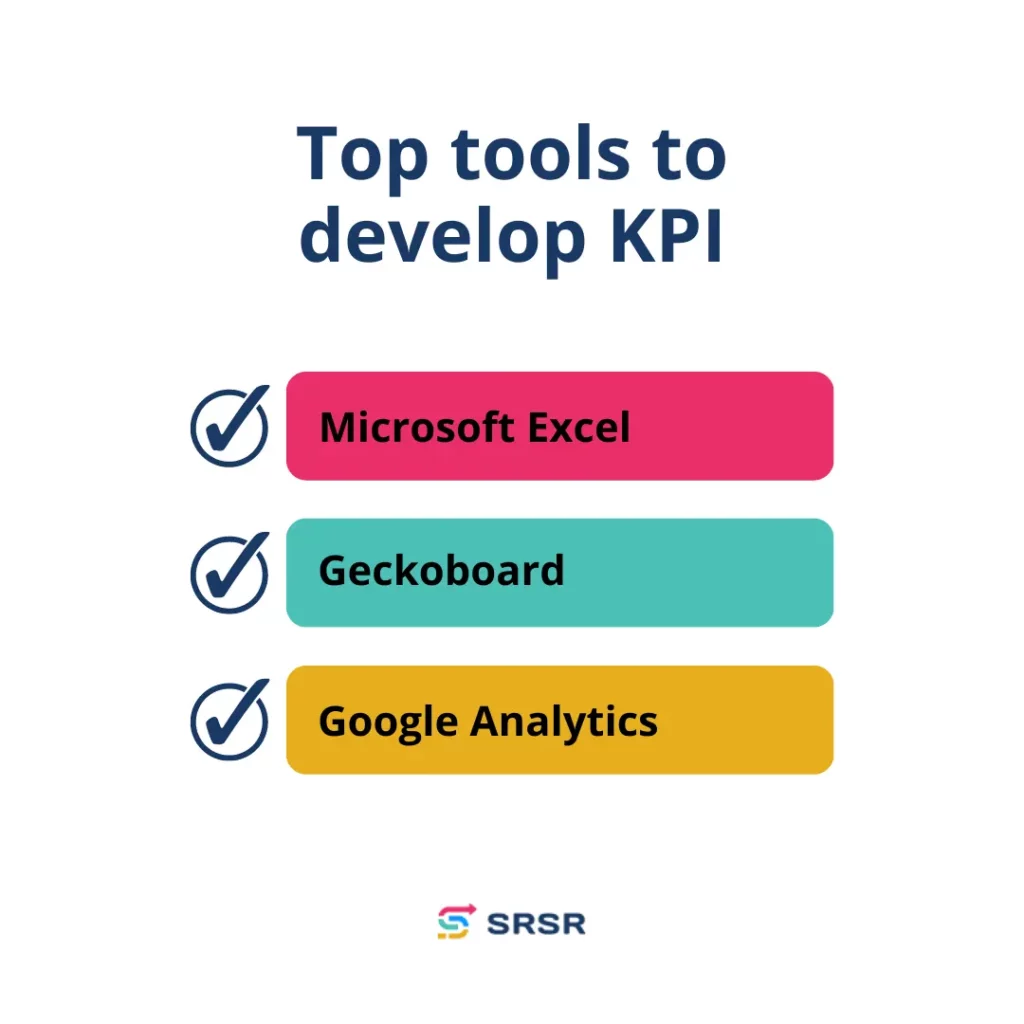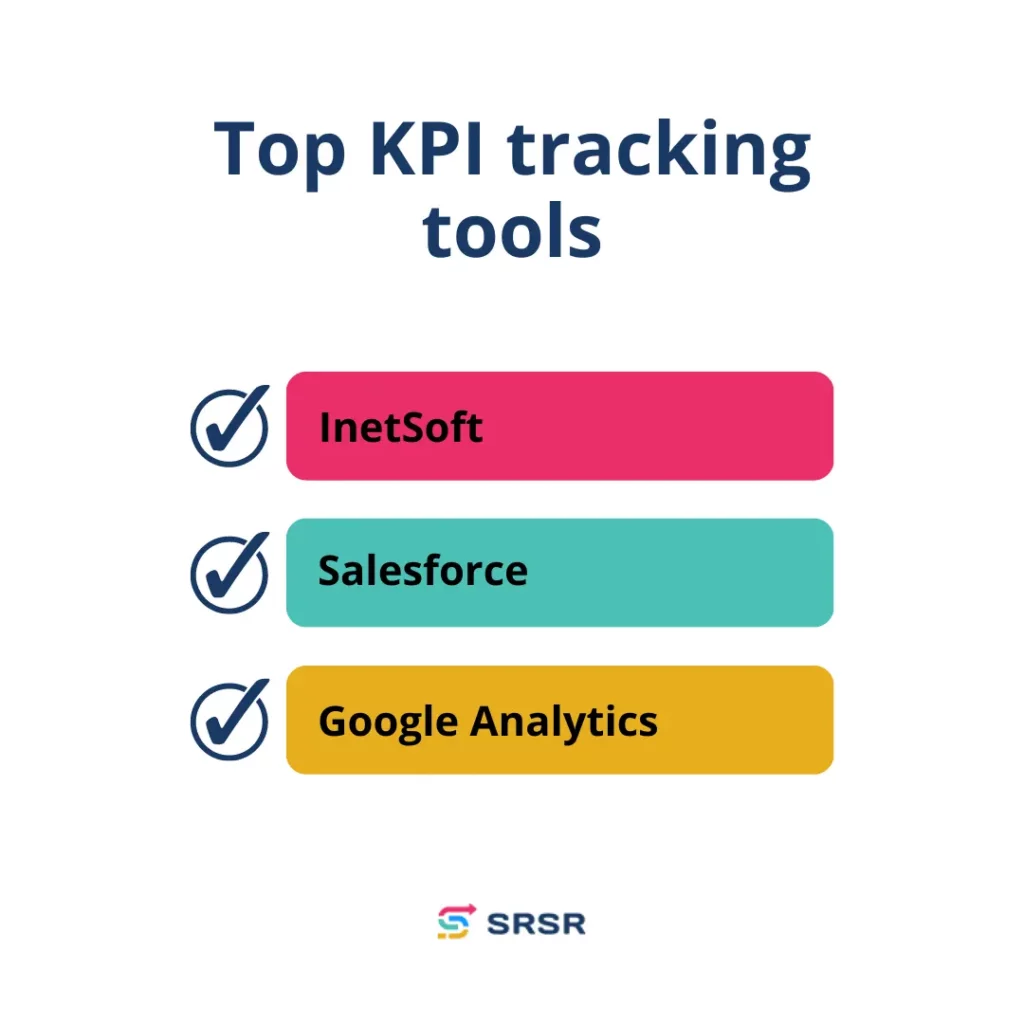There’s a lot of pressure on business owners today not just to have a key performance indicator (KPI) dashboard but to choose the right KPI dashboard and the right KPI tracking tools for their business. A lot of new programs have been released for businesses in the last few years, trying to replicate or improve on the successes of the first KPI dashboards. While that proliferation of software can be good because it means you have a lot more choices and a wider selection of features and functions, it also means that you need to do a lot more research to find the right dashboard for your business. Or you may go the route of building your own KPI dashboard with software that lets you collect and access data you choose rather than a prebuilt dashboard that lets you choose from what information it thinks might be most important.
To help you get started, let’s talk about what a KPI dashboard is, how it can help your business, and some of the top KPI tracking tools available to business owners right now.
What is a KPI dashboard?
KPIs provide key information about how your business is doing. This could be how much profit you’re making on a given product, or it could be less obvious examples like the ratio of customers who interact with your website versus the number of potential customers who visit your site. They can also measure the amount of time the average visitor spends on your site, especially in businesses where it takes more time to land a sale.
A KPI dashboard presents a selection of key data for your business, usually in highly readable graphs and other visualizations. You might also see a percentage toward specific goals, the amount of work time spent on a project, or other information depending on your business. Different people within an organization also often have access to different dashboards to give them access to the data and performance metrics relevant to their part of the operation. These tools make it easier to make informed decisions, can aid in business growth, and make it easier to see opportunities for improvement within your business.
How tracking KPIs can help your business
Key performance indicators give you a window into what your business is doing and have always been used to track progress and identify key goals. A good KPI can help save time and labor throughout your business, not just at the top. The KPI data is already there to begin with, so what does having KPI tracking tools offer your business? Here are a few key benefits to consider:
- Easy-to-access reporting, saving time and energy
- All the relevant data is in one place, making it easier to compare performance in different sectors and identify ripple effects from one part of your business to another
- Easier reporting and communication
- Access to high-quality reports to help guide strategy and management decisions and make it easier to stay on top of problems before they disrupt the business
Tools to develop KPIs
Gathering data for your business is the first step to monitoring KPIs. You can’t monitor a KPI if you don’t have the performance information, to begin with. Here are three tools that can help you get there.

1. Microsoft Excel
Microsoft Excel is where a lot of businesses start and can be where a lot of businesses stay over time. It’s versatile, has many data-crunching functions that turn the numbers into usable information quickly, and most people are already at least slightly familiar with the platform.
If you’re looking for a bare-bones reporting system that does what you need it to, doesn’t have bells and whistles that get in the way, and gives you a lot of options for how you track data, Excel is a great option. Excel is also specifically set up for KPI development; there are native tools in the platform to help you create this specific data.
However, Excel is also the oldest data management software system. While that’s a point of pride, it also comes with a certain level of clunkiness and requires a significant time investment to make it work as intended.
Excel requires a Microsoft 365 subscription, but you’re relatively likely to already have that subscription cost.
Pros:
- Robust data management tool with a lot of key features and functions ready to go
- Can also be used as a dashboard, if you have the time and expertise to set one up
- Part of a software subscription you may already use
Cons:
- No mobile version or access
- No real-time support
- Data always lags
- Takes a lot of time and effort to maintain
2. Geckoboard
Geckoboard is both a KPI development tool and a dashboard where you can publish the data and reports for your employees to see. It’s intuitive to build and create the dashboard you need and has more than 80 different tools to help you find and select the best KPI datasets for your business.
In addition, this tool is powerful for highlighting important information and making presentations.
Pros:
- Geckoboard is relatively affordable with the drawback of additional costs for added features.
- It has a lot of built-in integrations and tools.
- It is great for building starting datasets and getting KPI information quickly.
Cons:
- A limited number of database connections means that only so many dashboards can be active at once.
- Pricing has gotten more piecemeal and expensive over time and is likely to continue doing so.
3. Google Analytics
We’re going to cover Google more in the tracking section that comes next, but it’s worth noting here that Google Analytics is often one of the first tools you can use to develop your business’s KPIs. Google Analytics, yes, including the free version, offers incredibly valuable insight, especially in marketing. The downside is that you’re stuck with the metrics Google Analytics thinks are important rather than getting the specific datasets you want and creating them for yourself.
So the biggest pro here is that it’s free, effective, and offers a lot of ready-to-harvest data. The main con is that what you get is what you get; there’s not much room to gather more data or interpret it in different ways.
Top KPI tracking tools
Here are some of the best KPI tracking tool options, free and paid, for different businesses. We’ve chosen a selection of five KPI tracking tools with different strengths and specialties to help make sure there’s something here for just about every business owner.

1. InetSoft
InetSoft is a highly customizable dashboard that allows you to choose from a wide range of data tracking and reporting tools, it has a drag-and-drop interface that makes dashboard arrangement simple, and it makes data mashups easy to use. Since this software is also designed to use real-time data, it minimizes the time between data collection and interpretation.
That said, InetSoft can come with a steep learning curve, especially for users who need more in-depth tools or more complex data analytics. It’s designed so that you don’t need to specialize in business information to use and benefit from the tool, but that doesn’t mean that it won’t take time to learn the tool. At the same time, when it comes to the analysis and reporting of real-time data, there aren’t many better options. InetSoft counts the U.S. Department of Defense, the CIA, IBM, and NASA among their clients.
There are two free plans, one for individuals and the other for small businesses. However, these have limited functionality, and the subscription cost is only available on request if you realize you need additional functions.
Pros:
- InetSoft is highly customizable.
- It gives you access to real-time data.
- It has a highly responsive design.
- Data mashup reporting is a huge asset for connecting different data sets and finding relationships between different parts of your business’s operations.
- It is accessible on almost any device.
- Free versions are available.
Cons:
- The paid version is expensive.
- The most innovative and helpful features come with a steep learning curve.
- Users need to be motivated to explore and learn to use the technology; otherwise, they may not get the full benefits.
2. Salesforce
Salesforce is one of the better-known KPI dashboards out there, to the point that it’s not uncommon for businesses using this software to include Salesforce familiarity in their hiring requirements. A ton of businesses know and use Salesforce, which can make it one of the easier tools for tracking KPIs to adopt.
If you have 10 or more employees, chances are that at least one has worked with Salesforce before and will be familiar with the tool. Of course, a program being common doesn’t necessarily make it the best option. However, in Salesforce’s case, there are a lot of important advantages to consider.
For one thing, Salesforce allows you to gather KPIs on both a macro and a micro level. Individual employees can have a dashboard of their metrics, while at the management and ownership level, you can have a dashboard that tracks overall business KPI data. That saves you a lot of time translating how micro goals translate to macro success and how macro goals translate to individual success in your business.
Salesforce is a paid program with several membership tiers in addition to optional add-on features. Unfortunately, pricing isn’t super transparent, and using add-ons can significantly increase your cost.
Pros
- Access to business-level, departmental, and individual dashboards
- A wide range of potential KPIs is available
- Good customization of the dashboard and displays
- Great for powering business growth
- Third-party integrations deliver even more information in one place
Cons
- Time-consuming setup. Skimping on this step can significantly reduce the value of Salesforce as a KPI tracker.
- Lack of pricing clarity and expensive (if useful) add-on features
3. Google Analytics
Google Analytics is one of the most popular and powerful KPI tracking tools. Since it uses Google’s data, a huge amount of information can be effectively gathered and analyzed. However, the complexity and range of data options also mean that this tool can have a serious learning curve and that it might take time to figure out what data is most important for your business.
It’s also important to note that Google Analytics will only be available for a short time before the platform moves over to Google Analytics 4. That’s not necessarily bad; the new version may have improved user functionality, but you shouldn’t get attached to the current version.
Many of the best KPI tracking tools were initially based on what Google Analytics thought was most important to target and track. Google Analytics continues to be an industry innovator and changemaker.
It’s also a freemium program, which means you can use Google Analytics for free and only ever need to pay if you require access to the additional paid features. Since many businesses won’t ever need those tools, Google Analytics is a viable free KPI tracker. However, for businesses looking for even more data and analytics, Google Analytics 360 costs $150,000 a year. That makes the paid version one of the most expensive KPIs you can choose. But, depending on your business needs, it’s powerful enough to be worth it.
Pros
- It offers a lot of data and functionality.
- The free version is powerful and robust.
- The setup is simple.
- It offers a lot of powerful reports and analytics out of the box.
Cons
- It uses a lot of jargon that you need to learn.
- Data sampling is a requirement, which can reduce the accuracy of the included data.
- Google Analytics doesn’t comply with E.U. data protection legal requirements.
Most important KPI tool to track
Choosing the right KPI tracking tool for your business is critical to evaluate your business effectively. We can’t tell you what KPIs are right for your business, but we can give you some examples of key performance indicators that often help track and predict business performance.
Sales growth: This is a very direct measurement of how successful your efforts to win more sales have been. Combined with marketing information and other indicators, this can help you create more effective sales strategies in the future.
The lifetime value of a customer: Knowing how much each customer is likely worth in the long term can help you estimate how many customers you need to make certain targets.
Customer acquisition cost: This tells you how much you spend, on average, to win a customer for your business. Combined with the lifetime value of a customer, this is a powerful metric and can even help you figure out if you’re targeting the right audience. Most of the time, you should try to keep customer acquisition costs low, but in some businesses, you can justify high acquisition costs based on long-term loyalty and lifetime value.
Here are some other important KPIs to consider:
- SEO ranking
- Keyword performance
- Product usage
- Net promoter score
- Feature engagement and adoption
- Cost per lead
- Social media engagement and reach
- Return on investment
- Conversion rate
Depending on your business, you might want to pay attention to many other KPIs. In the customer service sector, average handle time can be a hugely important KPI. You may have a unique key performance indicator that isn’t common in your sector but is important for your business overall.
Don’t be afraid to experiment and find the data points most relevant to your business. It’s okay if you’re paying attention to different metrics as long as you’re getting the results you need.
Wrap-up: Do KPI tracking tools really help?
Key performance information has always been important in the business world. All businesses have some key metrics that tell them how the business is doing and whether they’re meeting targets, and that can also be predictive and help them anticipate and respond to market conditions in the future.
Having or building an effective KPI dashboard is effective and can be a powerful success tool for your business. Remember that even the best KPI dashboard can’t do everything for you. The biggest challenges businesses face with using KPI monitoring software are figuring out the most effective key metrics to use and then implementing and getting employees to use the information appropriately. When businesses say that KPI monitoring didn’t help them, chances are they were either using the wrong metrics or they had the right information but weren’t utilizing that information to steer decisions or guide day-to-day operations.
That said, choosing effective and accessible KPI software, like the options we discussed in this article, can also make implementing and using the KPI dashboard a lot easier, minimize the resistance to change within your business and drive future success.

